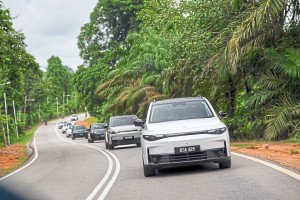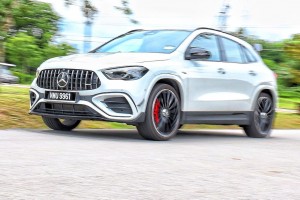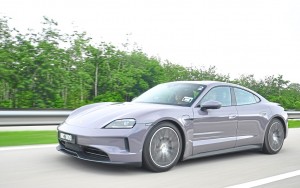MUNICH/PARIS: The new airless Uptis tyre from French manufacturer Michelin is made from rubber and fibreglass and has been hailed as a potential game-changer. Yet it has still not gone on general sale.
The Unique Puncture-Proof Tyre System (Uptis) technology was first announced in 2017 and public tests in real-life traffic conditions at the Munich car show in 2021 were pronounced a success.
Those who sampled the Uptis ride spoke of "amazing comfort", saying it exceeded all expectations.
Despite the accolades, the cutting-edge tyres which can be 3D-printed, are not yet available to buy on any new car.
Nearly 50 DHL Express vans already began running on Uptis tyres to make last-mile deliveries in Singapore by the end of 2023 and Michelin claims that its airless prototype tyre has taken another step forward.
Michelin also announced a tie-up with General Motors in 2024, but little of it has been heard since then.

In late January, a Michelin spokesman said there were no immediate plans to market the Uptis tyre since they were still being tested by DHL and on Chevrolet Bolt EVs in the Michigan area.
“Michelin Uptis is a breakthrough innovation in the tyre field,” said Bruno De Feraudy, Director of OEM activities for the Michelin Group on the firm's website.
“This is a result of some 50 patents linked to the tyre’s structure and high-tech materials. It demonstrates Michelin’s capacity for innovation in favour of safer mobility that is better for the environment."
So far so good, but although Michelin had planned the arrival of its Uptis by last year, questions remain, such as thorny regulatory issues. There is no international standard for airless tyres and uncertainty over the final price or the expected useful life of an airless tyre.
Bridgestone has been fettling the tyres for even longer than 10 years and claims other hurdles to be overcome include a way of avoid trapping debris within the spokes, as well as developing the best way to distribute weight evenly and consistently transmit loads.
For reasons like these, many industry experts think airless tyres may not arrive until 2030. Other tyre companies like Hanhook think they may come sooner once the red tape has been cleared.
According to Michelin's technical communication director Cyrille Roget, the Uptis is as revolutionary as the radial tyre was pioneered in the 1940s. Radials have been standard for years while tyres with air in them have been around for 140 years.
The time is rife for airless tyres since experts claim that punctures, sidewall damage and irregular, premature wear through incorrect pressures see over 200 million tyres wasted every year.
Incorrectly inflated tyres also lead to untold litres of extra fuel consumed annually.
The technology can also free up luggage space since there is not need for a compact inflatable spare to be carried in the boot.
Michelin said the puncture-proof wheel/tyre assembly, with no compressed air inside is intended for cars and light vans. There is no solution so far for trucks or heavier vehicles.
The tyre can bear a car's weight at road-going speeds thanks to material and structural improvements. Previous airless tyre versions could not support as much weight, or travel at fast-enough speeds.
The air has been replaced by a revolutionary structure capable of supporting the vehicle. This ensures the wheel's robustness and guarantees driving comfort and safety, said Michelin.
The Uptis was designed as a plug-and-play solution to fit any car or van and should allow users to drive conveniently and not worry about road hazards impacting the tyres.
One of the main advantages stressed by all those involved is the elimination of punctures, which considerably improves road safety.
By not depending on internal air pressure, these tyres are more resistant to deformations and damage caused by impacts or hits against curbs.
In addition, airless tyres are designed to prolong its useful life, since they do not suffer from the irregular wear that can occur in conventional tires due to poor inflation.
This means greater durability, fewer replacements and a considerable reduction in the waste generated and therefore more sustainability, says Michelin.












